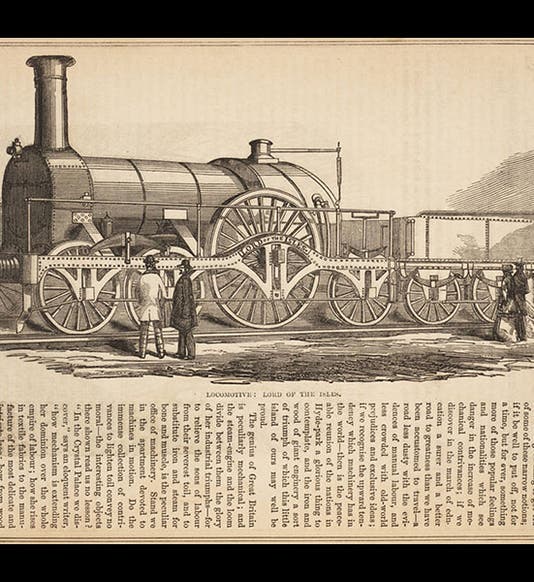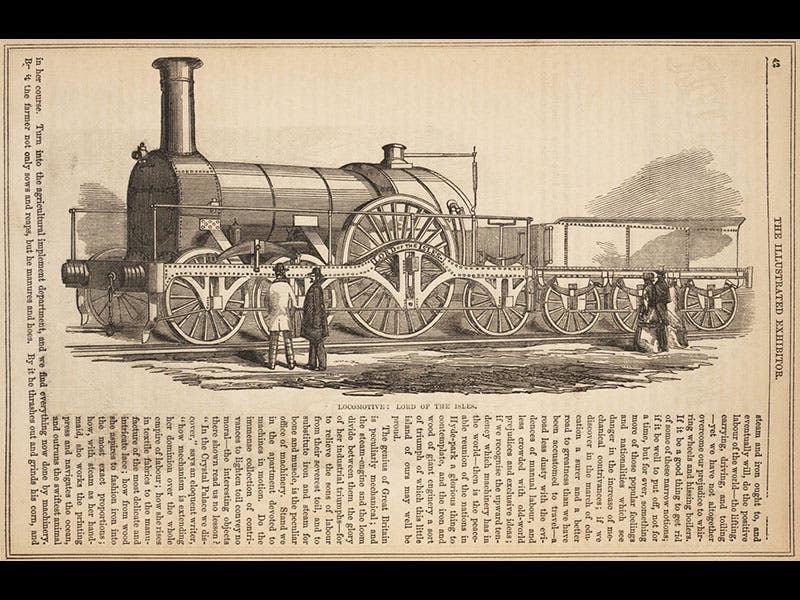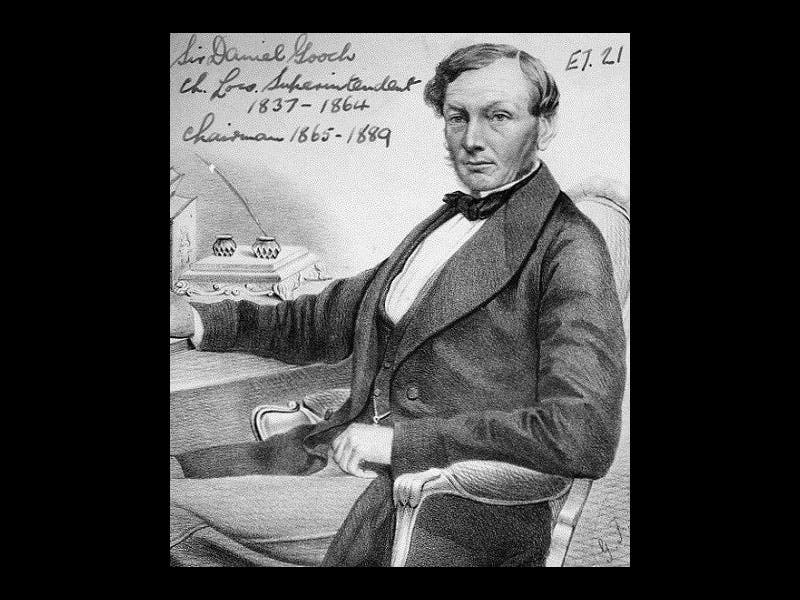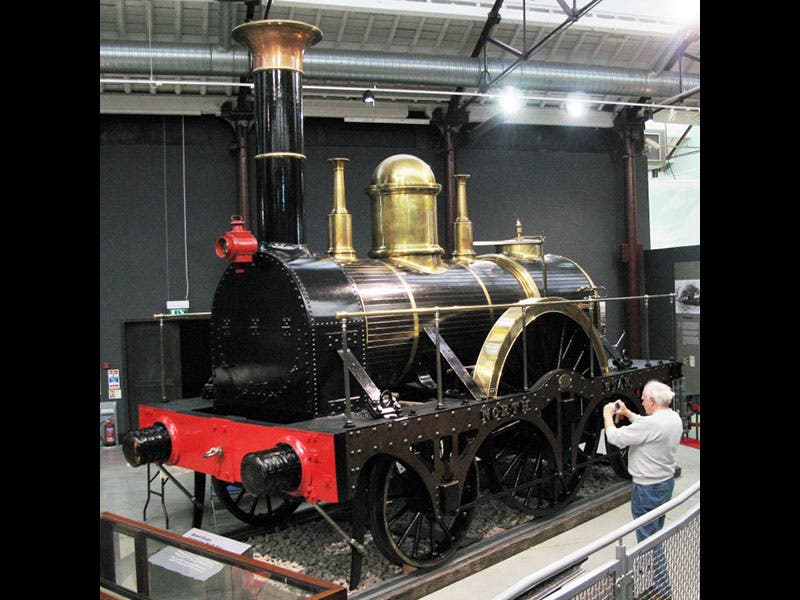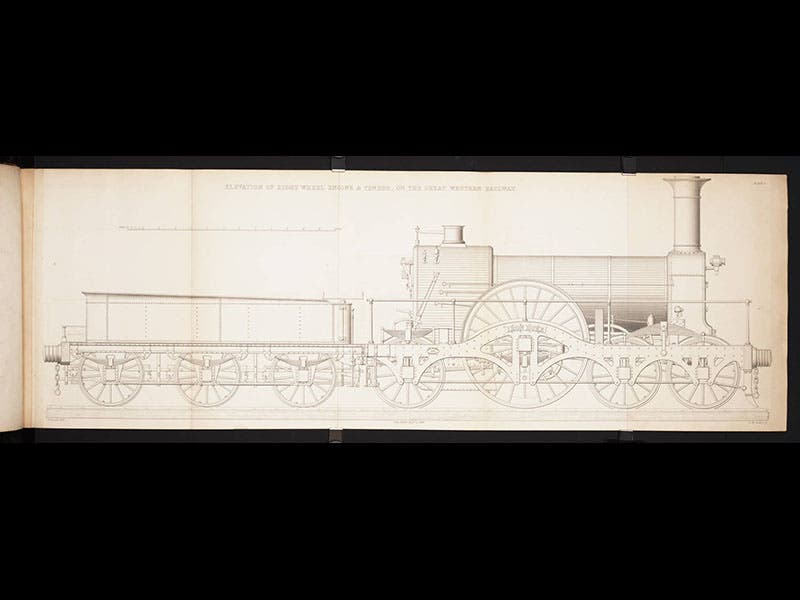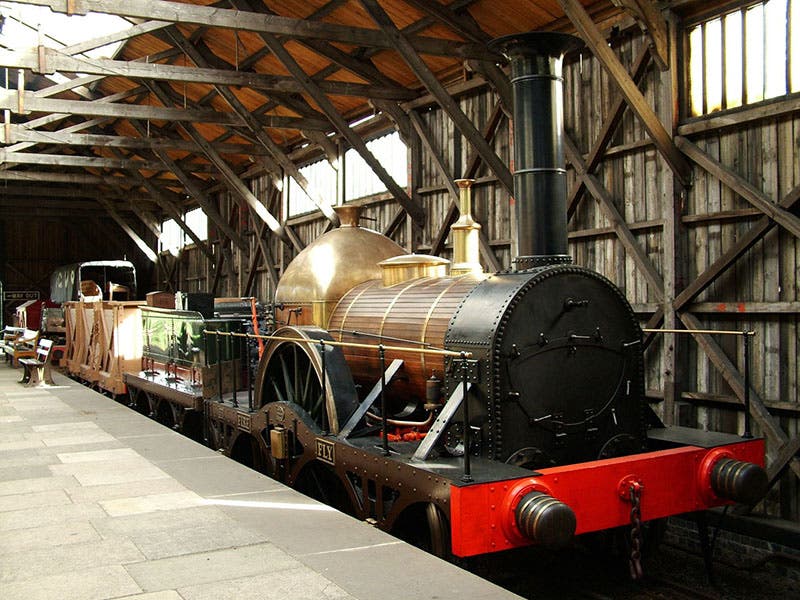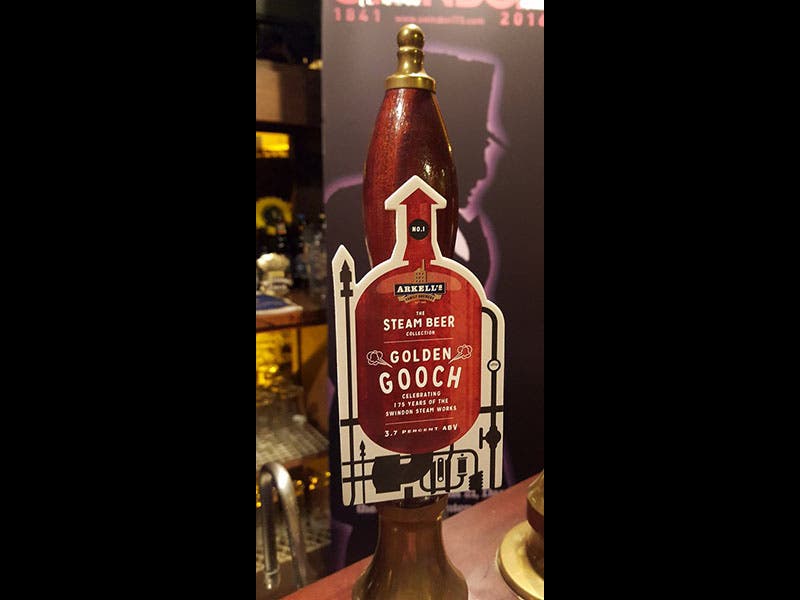Scientist of the Day - Daniel Gooch
Daniel Gooch, a British mechanical engineer, was born Aug. 24, 1816. When he was only 21 years old, Gooch was appointed superintendent in charge of acquiring, designing, and building locomotives for the Great Western Railway. The GWR was the brainchild of Isambard Kingdom Brunel, and it would run from London to Bristol, a stretch of about 112 miles. Brunel insisted on a track width ("gauge") of 7 feet, instead of the increasingly popular 4 foot 8 1/2 inch gauge of other railways, so all of the locomotives had to be broad-gauge, with 7 feet between the two drive wheels. Gooch purchased the first GWR locomotives, most notably the Star class engines, designed and built by Robert Stephenson between 1838 and 1841 (third image). But beginning in 1840, Gooch (second image) began designing his own broad-gauge locomotives, the Firefly class. These were "2-2-2" locomotives, meaning each engine had a two-wheel truck in front, two drive wheels, and two trailing wheels (fourth image). The Fireflys were built by a variety of locomotive works around England; 62 of them were eventually constructed. They could do 50 miles per hour, which, in 1840, was about 30 mph faster than other trains were travelling.
In order to keep his locomotives in service, Brunel needed an extensive repair facility, and Gooch suggested Swindon in Wiltshire as the site of a new maintenance plant. Swindon was right on the GWR line, about 35 miles from Bristol, and the Swindon Works was up and running by 1843. Although initially a maintenance facility, by 1846, Swindon was producing its own locomotives, most notably, the Iron Duke class of locomotives, designed by Gooch, with the first production model named The Great Western (fifth image). The Iron Dukes were 4-2-2's, with massive drive wheels, and they were capable of sustained speeds of 70 miles per hour, so they could make the London-Bristol run in just a few hours (plus stops). Thirty Iron Dukes were assembled at Swindon and put to work by 1855. One of them, the Lord of the Isles, was displayed at the Great Exhibition in 1851 before being put into service (first image). It is unfortunate that the broad gauge was eventually scrapped, because the Iron Dukes followed, and there do not seem to be any survivors on display anywhere, although there is a Firefly replica at the Didcot Railway Centre in Oxfordshire (sixth image).
Gooch is quite a hero in modern-day Swindon, since he quite literally put the town on the map. There is even a steam beer named after him (seventh image).
Swindon went on to engineer the laying of the first successful Atlantic cable, a story, perhaps, for another day.
Dr. William B. Ashworth, Jr., Consultant for the History of Science, Linda Hall Library and Associate Professor, Department of History, University of Missouri-Kansas City. Comments or corrections are welcome; please direct to ashworthw@umkc.edu.

